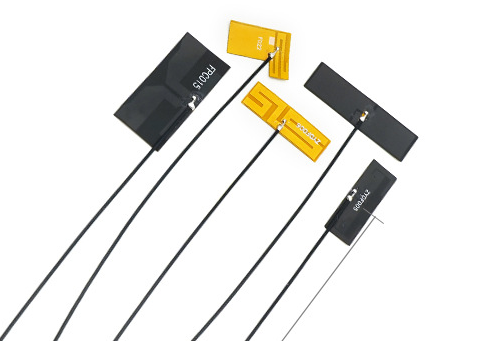difference between patch antenna and Kuwait microstrip antenna
In wireless communication systems, antennas are crucial components responsible for transmitting and receiving electromagnetic waves. When choosing antennas, different application requirements will guide us to choose different types of antennas. Among numerous antenna types, patch antenna and microstrip antenna are two common planar antennas, each with its own characteristics and advantages in design and performance. The following is a detailed comparison of these two types of antennas:

1. Structural features:
Patch antennas are usually composed of one or more metal patches, which are placed above the ground plane and excited by a feeder. The shape of the patch can be rectangular, circular, or other shapes, with rectangular patches being the most common. The radiation of patch antennas is carried out through the gaps at the edges of the patch.
Microstrip antenna is a special type of patch antenna, which consists of a conductive patch (usually copper or other metal) placed on an insulating substrate (such as FR4, ceramics, etc.), with the other side of the substrate being the ground plane. There are various feeding methods for microstrip antennas, including microstrip lines, coaxial lines, coupling slots, etc.
2. Working principle:
The working principle of patch antenna is based on the resonant cavity model between the patch and the ground plane. When the patch is excited by electromagnetic waves at an appropriate frequency, an electromagnetic field distribution is formed between the patch and the ground, resulting in radiation.
The working principle of microstrip antenna is similar to that of patch antenna, but due to its special structure and feeding method, microstrip antenna can support multiple modes of resonance, such as TM10 mode, TM01 mode, etc. This gives microstrip antennas greater flexibility in design.
3. Performance characteristics:
The advantages of patch antennas include simple structure, easy manufacturing, low cost, as well as good radiation efficiency and gain. They are commonly used in fields such as satellite communication, radar systems, and wireless local area networks.
The advantages of microstrip antennas are their low profile, lightweight, and easy integration into printed circuit boards (PCBs). In addition, microstrip antennas can adjust their radiation characteristics by changing the shape and size of the patch, making them suitable for applications in scenarios that require compact antenna design, such as mobile communication devices and laptops.
4. Application scenarios:
Patch antennas, due to their high gain and directionality, are commonly used in applications that require high directionality and long-distance transmission, such as point-to-point links and certain satellite communication systems.
Microstrip antennas, due to their small size and ease of integration, are widely used in personal communication systems (such as mobile phones), wireless network access points, and various portable devices.
5. Design and optimization:
When designing patch antennas, factors to consider include the size, shape, feeding position of the patch, as well as the thickness and dielectric constant of the dielectric substrate. By optimizing these parameters, the required impedance bandwidth and radiation characteristics can be achieved.
The design of microstrip antennas is more complex because it involves more variables, such as the shape of the patch, feeding structure, and material of the dielectric substrate. When designing, it is also necessary to consider the influence of surface waves and the possibility of multimode resonance problems.
Although patch antennas and microstrip antennas have similarities in structure and working principles, they each have their own advantages in performance characteristics, application scenarios, and design methods. When selecting a suitable antenna, it is necessary to decide based on specific application requirements and performance indicators. For example, if high gain and directionality are required, there may be a tendency to choose patch antennas; If miniaturization and easy integration are required, microstrip antennas may be a better choice. No matter which antenna is chosen, precise design and optimization are required to ensure that the antenna can meet the performance requirements of the system.





